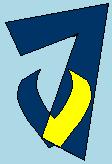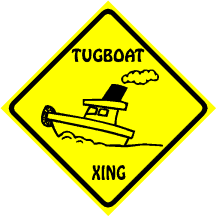
 | VENT 7 - TUG |

Tug is a Remotely Operated Vehicle (ROV) who operates via a tether connected to the Manned Vehicle. ROV's are distinguished by their tether, which traditionally gives the vessel access to (almost) infinite power and with fiber optics allows communication with people. In addition to carrying tools and sensors to depict the environment around it, Tug's realtime communication with scientists gives him higher precision and more relevant actions. If there's something interesting the viewers see Tug come across, they can ask him to take additional pictures and measurements, exploring the area in more detail than he would have otherwise done. As it is impossible to plan for all the possible situations, the tether allows flexibility of action.
In thinking about this advantageous tether, one finds that running a cable all the way to the habitat where the scientist labs and living quarters are is extremely difficult. It is important that Tug is able to explore vents within a few kilometer radius from the habitat, but having such a long cable creates many complications. First, currents make it difficult to control the cable and keep it in place. It is also important that the cable not drag along the seafloor and damage the life and geology the scientists are there to study. Further, a cable that is a few miles long requires a vehicle with huge propusion capabilities because it takes so much power to drag its entire mass. Ultimately, one realizes the utility of bringing the scientists with us - attach Tug's cable to the Manned Vehicle!
Technical Specifications
Dimensions = H*L*w = 0.6 m * 0.70 * 0.65 m
Depth rating = 5 000m
Tug is an rov, and in his design we have gone with the tried and tested frame structure, where a titanium alloy frame (bonded with a layer of Ni-base alloy),is used to provide structural support and the componenets are attached to it.
An important consideration in the design of the rov, is to separate the centre of buoyancy and the centre of gravity to confer stability to the vehicle.
This is achieved by packing the top of the rov with syntactic foam, and keepin the motors, and heaby sonars at the bottom of the rov.( see Navigation
Sensors and Sonars
| Instrument | Weight in Air(kg) | Weight in water |
|---|---|---|
| CTD | 2.7 | 1.4 |
| zmulti-beam | 4 | 1.25 |
| ADCP | 9.1 | 2.7 |
| Modem | 11.1 | 3.95 |
| THruster | 10.8 | 8 |
| Navigation and electronics | 2.4 | 2.4 |
| Titanium alloy pressure vessels | 5 | 4 |
| Titanium- nickel alloy frame | 8 | 6.2 |
| Sipper | 2.2 | 0.9 |
| Suction sampler | 1.1 | -1.65 |
| Manipulators | 1.8 | 1.0 |
| 3 cameras | 6.0 | 3.1 |
| 3 Lights | 9 | 5.4 |
| Buoyant ABS top | 30 | -30 |
| Syntactic foam | 5.4 | -8 |
RESOURCES
1. Tugboat Picture: http://www.nafts.com/hmpage.htm